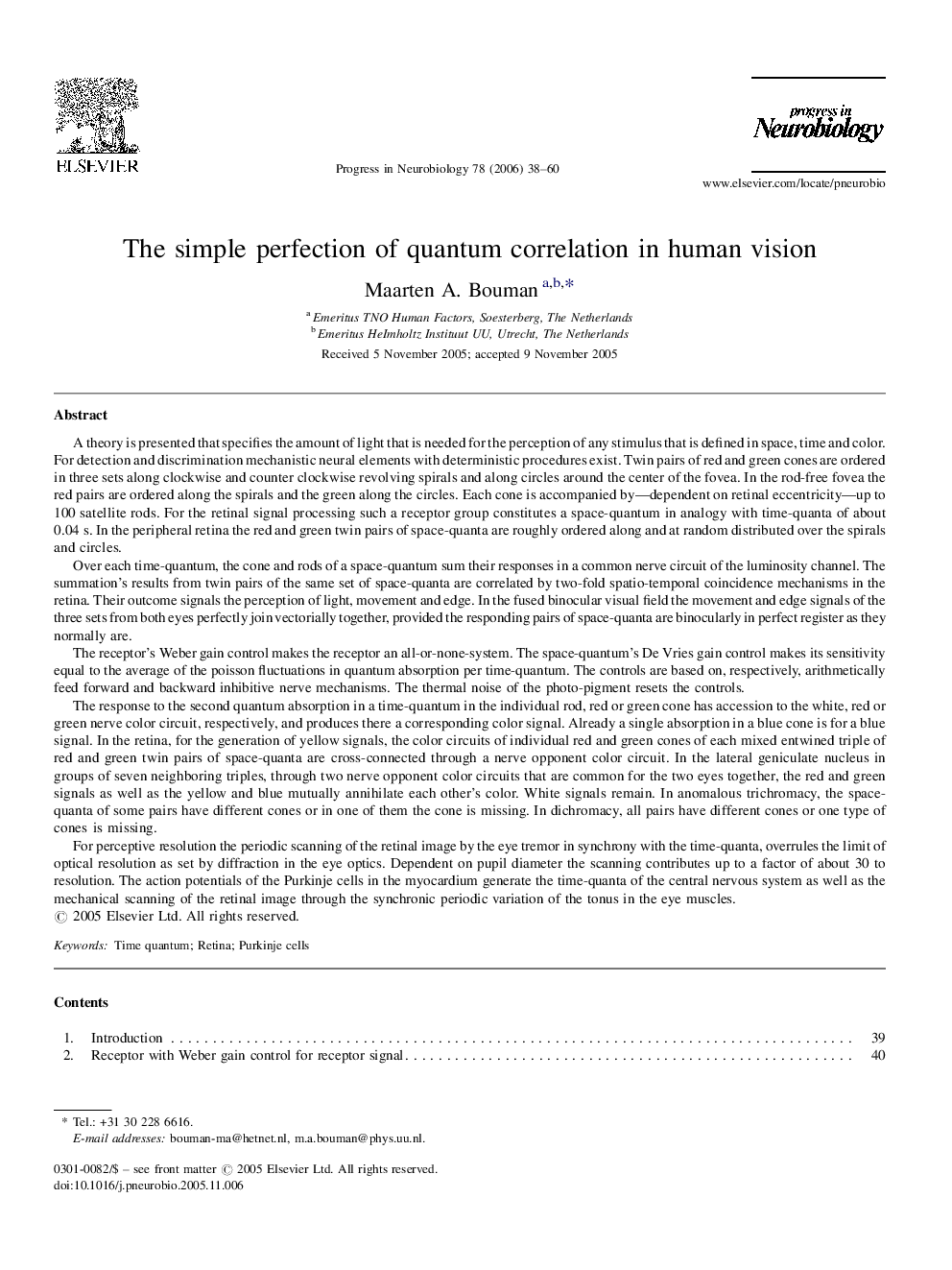| Article ID | Journal | Published Year | Pages | File Type |
|---|---|---|---|---|
| 4354042 | Progress in Neurobiology | 2006 | 23 Pages |
A theory is presented that specifies the amount of light that is needed for the perception of any stimulus that is defined in space, time and color. For detection and discrimination mechanistic neural elements with deterministic procedures exist. Twin pairs of red and green cones are ordered in three sets along clockwise and counter clockwise revolving spirals and along circles around the center of the fovea. In the rod-free fovea the red pairs are ordered along the spirals and the green along the circles. Each cone is accompanied by—dependent on retinal eccentricity—up to 100 satellite rods. For the retinal signal processing such a receptor group constitutes a space-quantum in analogy with time-quanta of about 0.04 s. In the peripheral retina the red and green twin pairs of space-quanta are roughly ordered along and at random distributed over the spirals and circles.Over each time-quantum, the cone and rods of a space-quantum sum their responses in a common nerve circuit of the luminosity channel. The summation's results from twin pairs of the same set of space-quanta are correlated by two-fold spatio-temporal coincidence mechanisms in the retina. Their outcome signals the perception of light, movement and edge. In the fused binocular visual field the movement and edge signals of the three sets from both eyes perfectly join vectorially together, provided the responding pairs of space-quanta are binocularly in perfect register as they normally are.The receptor's Weber gain control makes the receptor an all-or-none-system. The space-quantum's De Vries gain control makes its sensitivity equal to the average of the poisson fluctuations in quantum absorption per time-quantum. The controls are based on, respectively, arithmetically feed forward and backward inhibitive nerve mechanisms. The thermal noise of the photo-pigment resets the controls.The response to the second quantum absorption in a time-quantum in the individual rod, red or green cone has accession to the white, red or green nerve color circuit, respectively, and produces there a corresponding color signal. Already a single absorption in a blue cone is for a blue signal. In the retina, for the generation of yellow signals, the color circuits of individual red and green cones of each mixed entwined triple of red and green twin pairs of space-quanta are cross-connected through a nerve opponent color circuit. In the lateral geniculate nucleus in groups of seven neighboring triples, through two nerve opponent color circuits that are common for the two eyes together, the red and green signals as well as the yellow and blue mutually annihilate each other's color. White signals remain. In anomalous trichromacy, the space-quanta of some pairs have different cones or in one of them the cone is missing. In dichromacy, all pairs have different cones or one type of cones is missing.For perceptive resolution the periodic scanning of the retinal image by the eye tremor in synchrony with the time-quanta, overrules the limit of optical resolution as set by diffraction in the eye optics. Dependent on pupil diameter the scanning contributes up to a factor of about 30 to resolution. The action potentials of the Purkinje cells in the myocardium generate the time-quanta of the central nervous system as well as the mechanical scanning of the retinal image through the synchronic periodic variation of the tonus in the eye muscles.
